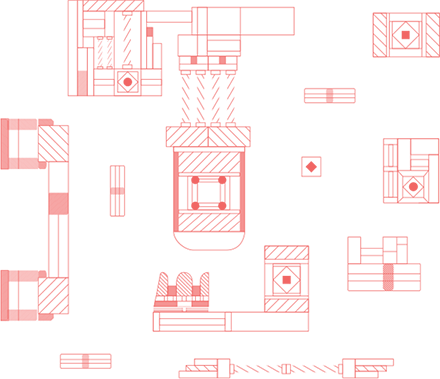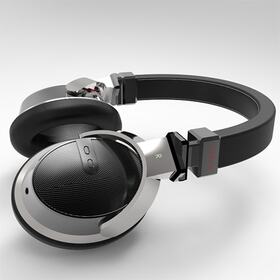
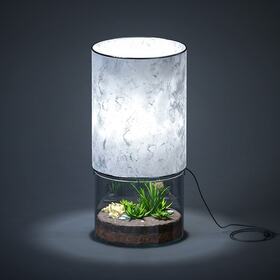
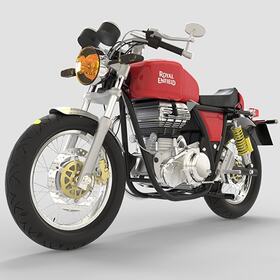
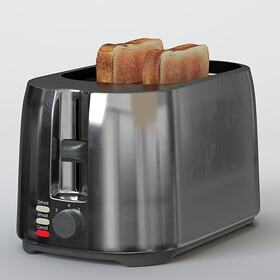
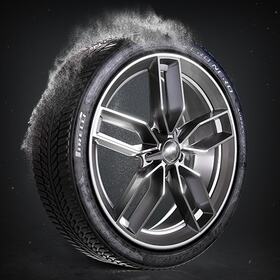
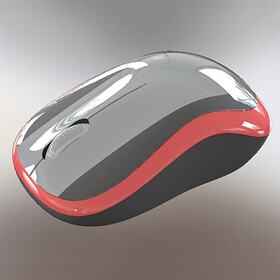
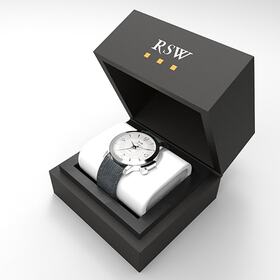







Have you realized that you need to conduct a 3D scan? This discovery can feel like a daunting and overwhelming task—especially if you’re not a designer or do not have one on staff. However, it’s worth noting that 3D scans are a standard part of everyday life. The computer you are using to view this webpage, the car you drove in to work with, and even the smartphone you use each day could have started as a design inspired by a 3D scan. The technique of 3D scanning is widely used. It has become a practical and useful way to preserve design ideas, allow designers to take inspiration from certain technologies, and jumpstart a new product's production.
Nevertheless, even though this design technique is commonplace, finding a way to get it done can feel foreign. Fortunately, the team at2022世界杯直播时间is here to help guide you along the process. For over a decade, our team of in-house engineers and designers has helped companies large and small find the design talent they need. They have used their expertise and experience to select the best design professionals for the Cad Crowd platform. For this reason, we are in a position to help you find a designer who can help with your 3D scanning needs. For more information about the 3D scanning process and how our team can support you, be sure to keep reading.
The technical details of 3D scanning can make it seem more complicated than it is. In short, 3D scanning is the process of capturing an object's exact size and shape. This design technique is used to create a digital copy of a physical item. It’s similar to a traditional paper scanner; however, it does differ in a few key ways.
它不仅捕获一个条目的颜色,但是it also produces a digital model that captures the object's geometry, shape, and texture. Basically, if you want to take an item and turn it into a 3D model that you can test and manipulate digitally, then 3D scanning would be the ideal process to use. It is worth noting that 3D scanning is also a process of reverse-engineering.
3D scans are typically not done in one fell swoop as an object is typically scanned multiple times to collect the detail necessary to represent a 3D item as a scan.
Additionally, 3D scans are used in a variety of industries. Here are a few examples of how this technique is implemented across specific sectors:
Manufacturing—3D scanning is essential to the functioning of the industrial and manufacturing sectors. This technique helps engineers and users inspect various instruments, produce machinery that meets specifications, and participate in reverse-engineering to help with prototyping.
Healthcare and medicine—3D scanning has made it possible for doctors, nurses, and other healthcare personnel to increase patients' comfort while also personalizing their care. It prevents the use of more invasive practices that were used in the past and allows for greater insight into the human body and any possible illnesses. The 3D imaging technologies of ultrasounds can show a 3D image of an unborn child. Additionally, reverse engineering that happens due to 3D scans can help to customize items like prosthetics and implants. 3D scanning is helping to move innovation forward in the healthcare community.
Forensic sciences—The world of CSI is becoming even more of a reality. Today, forensic scientists can use 3D scanning technology to scan indoor and outdoor settings to locate potential evidence. They can then even recreate these locations to test them and run through possible criminal activity scenarios. These technologies offer forensics professionals the opportunity to gain as much insight into a crime scene as possible.
Archaeology and historic preservation—3D scanning offers multiple services to archaeologists, paleontologists, and historians looking to preserve the past. Much like forensic scientists, these individuals can use 3D scanning to recreate artifacts, create online museums, and work on analyzing or testing older items to see where they may have come from. Additionally, these professionals can also use 3D laser scanning to recreate specific locations to see what they may have looked like years ago.
There are many uses for 3D scanning technologies. However, the first step in starting this process is to find the best 3D scanning designer for the job. Cad Crowd can step in to provide guidance and help you find the best design talent. Regardless of your sector or your company's size, our team wants to support you in your next 3D scanning project. Our in-house team of experienced engineers and designers is here to address your design needs.
You may be wondering if 3D scanning is worth the investment, and it's never a bad idea to determine whether an expense is worth your time. However, we want to help you decide if 3D scanning is worth adding to your business budget. Here are a few benefits of including 3D scanning as a line item:
Speed up the design process—You may already have an idea of how you want a new product or piece of machinery to look, and 3D scanning prevents you from having to start from scratch. Instead, you can reverse-engineer an object that is an inspiration for what you want to do and start from there.
Ensure greater accuracy—You don't have to guess or estimate the measurements of a product. You can be confident in the fact that you have accurate information regarding angles and the geometry of the design. When you use tactics like structured light scanning, you are able to capture an image of every part of an object. This benefit can lead to more accurate measurements, which will reduce the cost of having to correct errors.
Increase the speed of prototyping—Much can go into the process of rapid prototyping. Attempting to stay within a project scope while also adhering to project specifications can be a challenge. This reason is why 3D scanning is critical to the overall process of design and drafting. It can decrease the number of prototype cycles and save data from various scans to make it easier to go back and edit the design without starting from the beginning.
Compare designs to already produced objects—One of the coolest things about 3D scanning is that you can easily compare potential plans to already manufactured products. For example, if you scan a device, you can see how close it is to a 3D model and make necessary changes to come as close to the actual design as possible.
Add ease to the 3D printing process—3D scans are an excellent way to speed up the 3D printing process. A high-quality 3D scanner can produce a high-quality scan that makes it easier for 3D printers to take the scan and turn it into a polished 3D model.
There are several benefits associated with 3D scanning, and our team wants you to realize as many of them as possible. This service can save you time and money while also contributing to a higher-quality product.
However, again, the first step in benefitting from 3D scanning is to find a capable designer to help you move to the next level. Our team of in-house engineers and designers have chosen only the most talented design professionals to join the Cad Crowd program.
Our team wants to make it easier for you to find the design hep you need. So, for a look at how we can help you do that, we invite you to take a look at ourHow It Workspage.
Did you know that there are various types of 3D scanning? While it's used as an umbrella term for turning a physical object into a digital copy, there are many ways that you can accomplish this process (with each technique having its own pros and cons). Here at Cad Crowd, we want you to be as informed as possible when you're determining the best way to capture 3D scans. Therefore, here is a look at some of the more well-known types of 3D scanning technologies.
Laser-based 3D scanning—Have you ever heard of trigonometric triangulation? If not, don't worry. It isn't as complicated as it sounds. That process is used to capture various points on a physical object to produce a high-quality scan. Laser 3D scanners project a laser line onto an object, which splits into multiple lines. From there, these scanners use the reflection of the object to create a scan. These scanners can come in portable hand-held iterations or larger stationary machines. They are some of the lower-cost scanners to use and are less sensitive to lighting or weather conditions than their counterparts.
Structured 3D light scanners—The difference between this method and laser-based 3D scanners lies in how the scan data is collected for these scanners. Unlike laser-based 3D scanners, structured 3D light scanners project a light pattern onto an object. One or more sensors are then used to read the patterns' edge to determine the item's distance, texture, and size. This scanning method is much faster than alternatives, produces a quality high-resolution image, scans over large areas, and is safe for human or animal eyes. These scanners can also be portable or held on a tripod.
Medium and long-range 3D scanners—Maybe the object you need to scan isn't something small that can fit on a coffee table or even in a room. This scenario is where medium and long-range 3D scanners come into play. Both are typically used to scan larger objects and structures like buildings, aircraft, and industrial equipment. For example, to scan a building, a scanner would rotate around it while also spinning a mirror to point the laser at the building to scan each component. Long-range 3D scanners can scan up to one million points per second and scan larger areas (typically more than 1,000 sq meters).
Contact scanning—Out of the options above, this is the only one that requires physical interaction with the objects. This one mimics what one would typically do with a typical household printer or scanner. A contact scanner requires that a probe is moved over the entire surface of an object. Enough points on the item have to be scanned to produce an accurate model. Because these probes are coming into such close contact with the object, it is possible to get an even more accurate 3D scan of the surface than other methods. However, while there may be an increase in accuracy, there is a trade-off of speed. Because each portion of the object has to be manually scanned, the process can take much longer than other methods.
There are a variety of ways to get your objects scanned to become digital copies. Many times, during the conversation about 3D scanning, only a few different methods are mentioned. Nevertheless, there are various types to choose from depending on your budget, scanning needs, the size of the object, and how fast you need it. Even methods like photogrammetry, or laser-pulse 3D scanners, should be included in your assessment, as one may work better for you than others on this list.
Again, each 3D scan project is not a one size fits all, and your project may have unique needs that require a specific scanning method. This is one of the reasons why Cad Crowd can be a top choice for your 3D scanning needs. Depending on your project needs, we can help you find the best 3D designer for your projects and assist you with any additional services you may need support for.
Our network includes top-notch designers from all over the world, and our platform has a variety of ways for you to connect with them. For a look at our designers, be sure to check out theirprofiles. There, you can get a preview of the design talent that our team has to offer.
As revealed in the previous section, there are many ways to collect 3D scan data for your next 3D modeling and design project. Each one offers pros and cons, and your goal is to figure out which mix of advantages and disadvantages works for you and your project. While determining the 3D scanning method to select and designer to work with, take a look at this checklist for some guidance.
Accuracy—How sharp do you need your 3D scans to be? You likely want the most accuracy possible. If so, that should be a high priority on your list. However, you may find that you need to weigh using a contact scanner versus a structured light scanner. One is more accurate but slower, while the other gives you a decent or relatively high level of accuracy at a much faster rate. Additionally, the calibration will also play a significant part in your selection. The higher the accuracy, the more trade-offs there may be regarding other features—like speed.
Resolution—While accuracy is crucial, the image resolution is also an important feature to look into. Resolution is the distance between two points in a 3D model, and depending on your sector, resolution may be the highest priority on your list. If you are in historic preservation or the medical field, you will likely value this feature more than others. However, a high resolution does create a valuable trade-off. Higher-resolution scans take more time to produce. Additionally, these scans are more likely to happen on heavier and less portable 3D scanners. So, depending on how important resolution is to you, you may have to choose a more expensive and less rapid 3D scanner.
Speed—If you are in a fast-paced industry that requires accurate scans that need to be created in a small amount of time, then speed may be the top priority. Scanners like laser 3D printers and structured light printers are known to produce scans faster than other options. Again, depending on whether you go portable or stationary will impact the speed and resolution. However, you have to determine how fast you need scans to happen and if this trade-off between speed, accuracy, and high-resolution is worth it for your company.
The size of the objects—How large is the item that you are scanning? Is it a small object that can fit on a coffee table, or is it something that needs to be scanned outside or in a large industrial area? This decision will play a huge factor in the type of scanner that you choose. The first option may require you to invest in a contact scanner, while the latter will cause you to consider a much larger option like a medium or long-range scanning option.
Portable or stationary—Do you need to be on-the-go to conduct 3D scans? Then this should play into your decision. Depending on the size of the object you are scanning and your scan's distance, you may need to pick one over the other. This decision may also impact the design professional that you select for your project.
Price这始终是一个组件的决策process. In fact, it may be the most important one that you are considering. Again, the selection that has all of your preferences will be the most expensive, so staying within budget will likely involve having to decide which trade-offs you are most comfortable with. Photogrammetry may be less costly than other options, but it may lack speed or resolution, while a higher-priced option like structured light scanning will have more features.
You need to consider several features when selecting the best 3D scanning option. However, our role is to help you find the best person for your next process that encompasses many of the things you're looking for. In addition to 3D scanning and producing 3D scan data, many of our designers offer additional services. To look at the other ways that our designers can help you meet your design goals, please take a look at our Services page.
3D scanning doesn't have to be a complicated process. It can be one that is straightforward and stress-free—which is what the team at Cad Crowd strives to accomplish for each client we take on. We know that you have a lot to manage as a business owner.
From personnel management to marketing and customer engagement, you have many tasks to manage. One of our primary goals is to ensure that you can still accomplish your business goals while we take over the task of helping you select the best design talent for your projects. For over a decade, our team has helped companies like Tiffany Co., Pepsi Co., and various others locate and work with excellent designers regardless of their location. We want to do the same for you, irrespective of your project needs or your location.
我们的设计师已经预审核by our staff of experienced in-house engineers and designers, so you can feel confident that you are receiving exceptional support from those who have done the work. If you are ready to begin your next 3D scanning project, feel free to reach out to us for afree quote today.
If you know you need to have something 3D scanned but aren't sure how or with which method, don't worry. Our network of scanners can help determine which 3D scanning method is best for your project. We can also connect you with a 3D scanning service. Find outhow it works.
